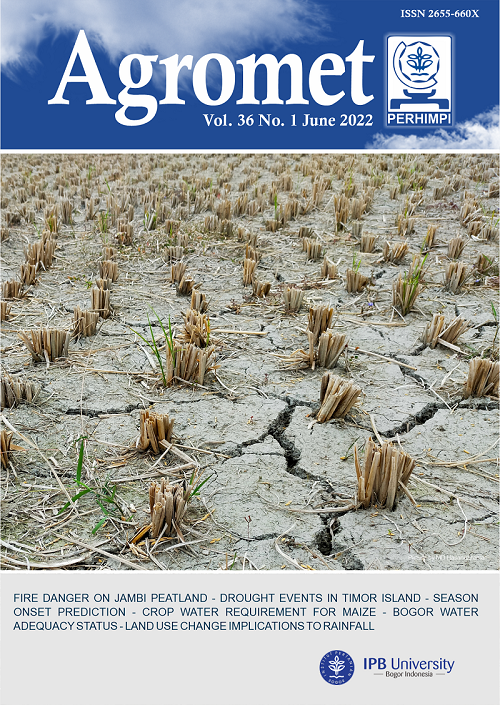Fire Danger on Jambi Peatland Indonesia based on Weather Research and Forecasting Model
DOI:
https://doi.org/10.29244/j.agromet.36.1.1-10Keywords:
bias correction, El Niño, fire danger class, peat fire vulnerability index, statistical indicatorsAbstract
Monitoring drought related to peat fire danger is becoming essentials due to the adverse impacts of peat fires. However, the current monitoring is mostly based on station data and has not yet covered all parts of peatlands. This research was carried out to initiate a spatial monitoring for peat fire, particularly in Jambi province. Our approach was simple by integrating Weather Research Forecasting (WRF) output with a drought-fire model. This research aims to: (i) calibrate rainfall, air temperature and soil moisture data from WRF output; and (ii) analyze temporal drought related to fire danger. A drought-fire model known as Peat Fire Vulnerability Index was applied with daily inputs of WRF output at 5km resolution, which were comprised of rainfall, air temperature, and soil moisture. The results showed that calibration reduced rainfall magnitude, and slightly increased the maximum air temperature and soil moisture. The calibration performance was good as shown by a very low percent bias (less than ±5%), and lower error (RMSE=16.5; MAE=9.5). Our analysis showed that drought triggered by El Niño in 2015 had escalated extreme fire danger class by 38% compared to normal year (2018). This has been confirmed by a low variation of proportion of extreme class during July-August 2015. The results suggested that integrating spatial global climate data will benefit to the improved drought-fire model by providing spatial data. The results are expected to be a reference on drought and peat fires mitigation action.




